You Can Overwinter Mandevilla in These 2 Ways To Enjoy Their Vivid Tropical Blooms Year After Year
Either overwinter mandevilla as a houseplant or as a dormant plant
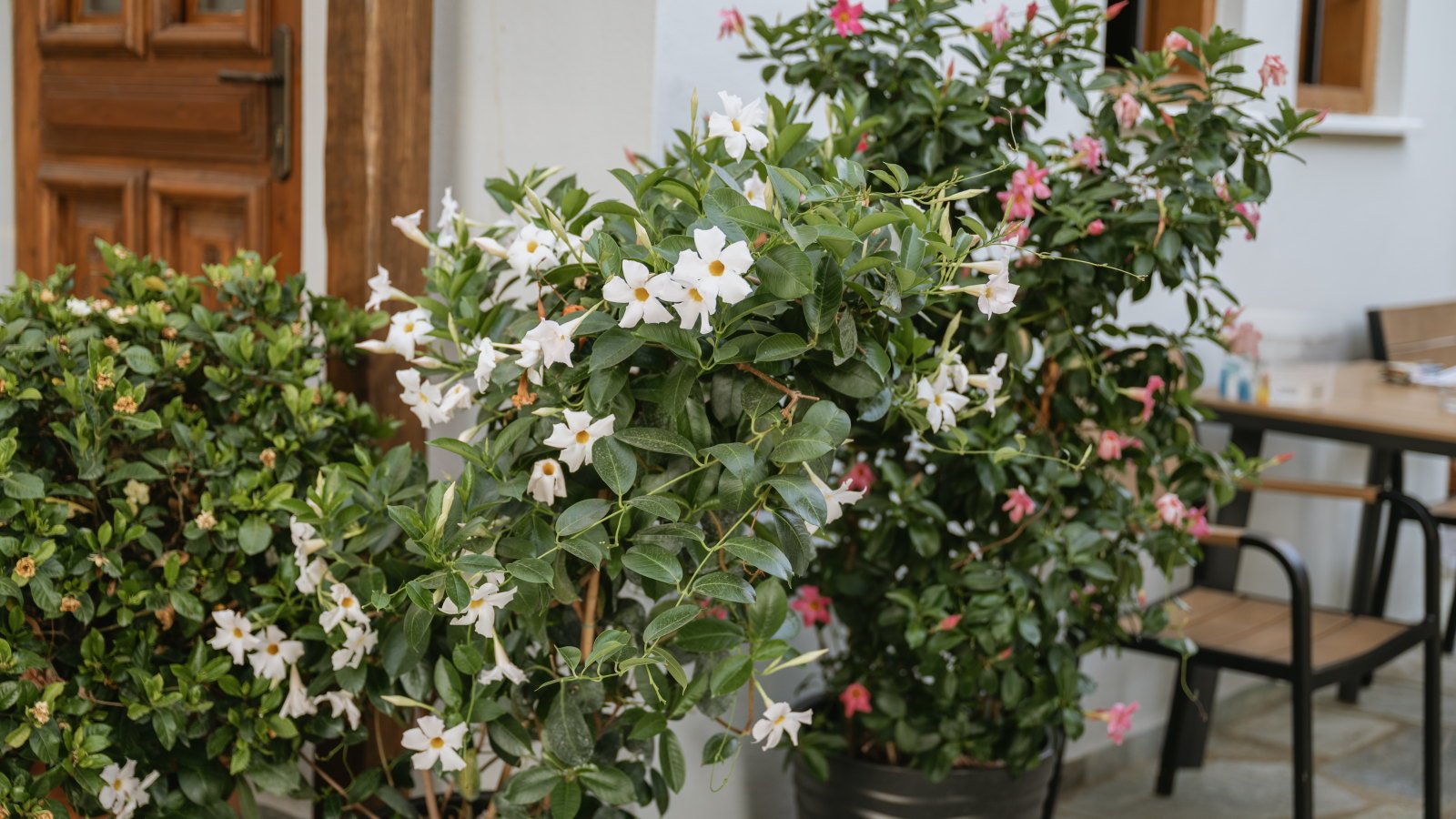

Mandevilla plants are striking tropical climbers native to hot climates, so it may come as no surprise that they only survive as perennials in US hardiness zones 10 and above. As they cannot tolerate cold, you need to overwinter mandevilla indoors unless you are blessed with a tropical or subtropical climate.
The stunning flowering climbers produce vivid trumpet-shaped blooms that attract hummingbirds and butterflies during the season. While mandevilla are fast-growing climbers that can be treated as annuals in cooler climates, it is not difficult to overwinter mandevilla indoors so you can nurture plants for several years.
You can overwinter mandevilla as a houseplant to enjoy foliage over the colder months, or let the plant go dormant and store it over winter to bring it out again in spring. This guide provides step-by-step instructions for both methods of growing mandevilla over winter, so you can confidently nurture your climbers.
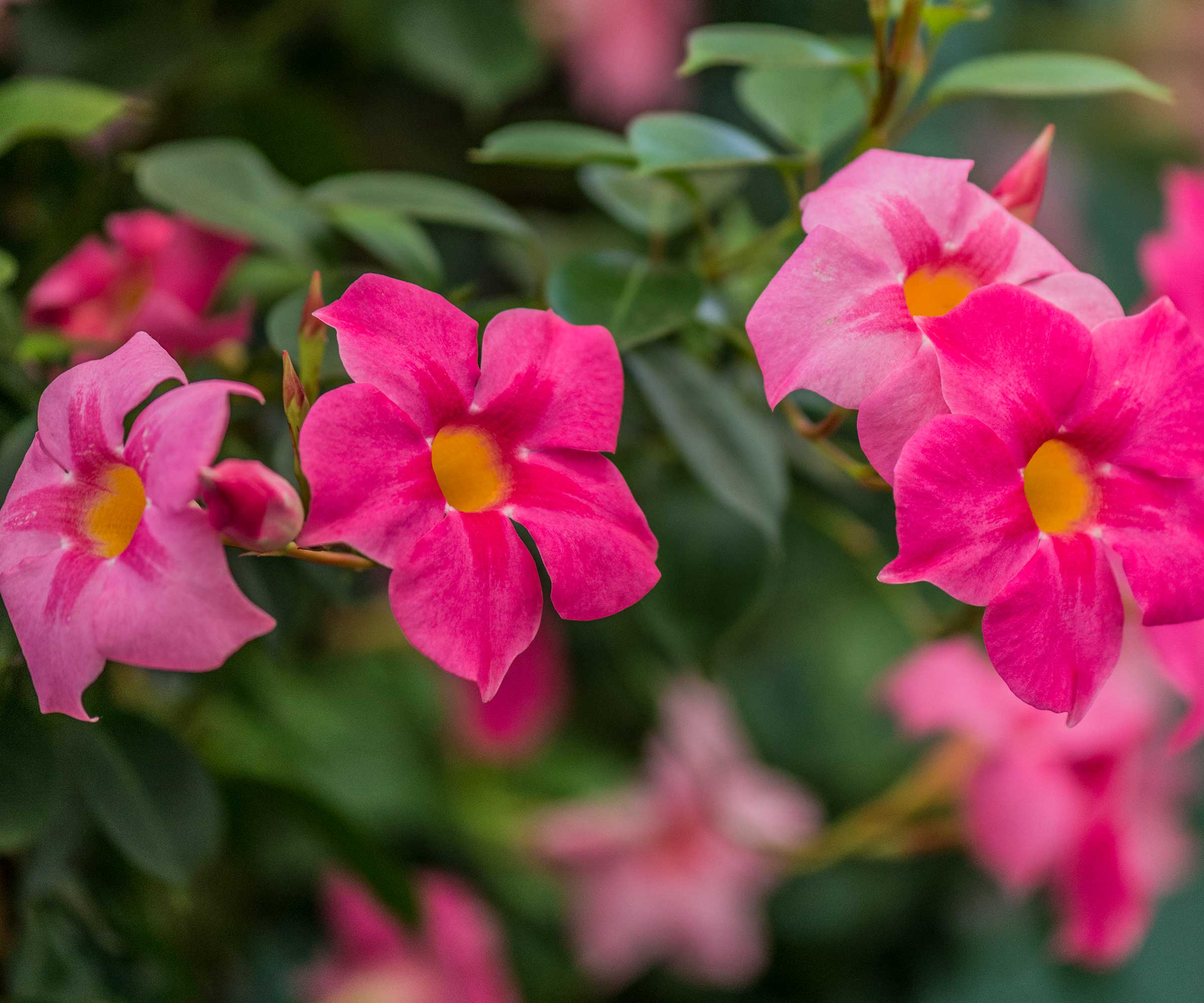
How to Overwinter Mandevilla – Which Way Will You Choose?
Mandevilla is native to the warmer regions of North, Central, and South America. The fast-growing climbing plants can grow up to 10 feet each season and bring a tropical garden vibe to any space, making it a popular climbing plant for growing up a house.
While gardeners in tropical or subtropical climates can have their plants in the ground, those in cooler climates often grow mandevilla in pots to climb up trellises. These plants are then either discarded come winter or moved indoors to survive winter in one of two ways.
If you are new to bringing your tropical plants indoors, let first look at the steps to take to treat it as a houseplant and then how you can overwinter mandevilla indoors in a dormant state.
How to Overwinter Mandevilla As a Houseplant
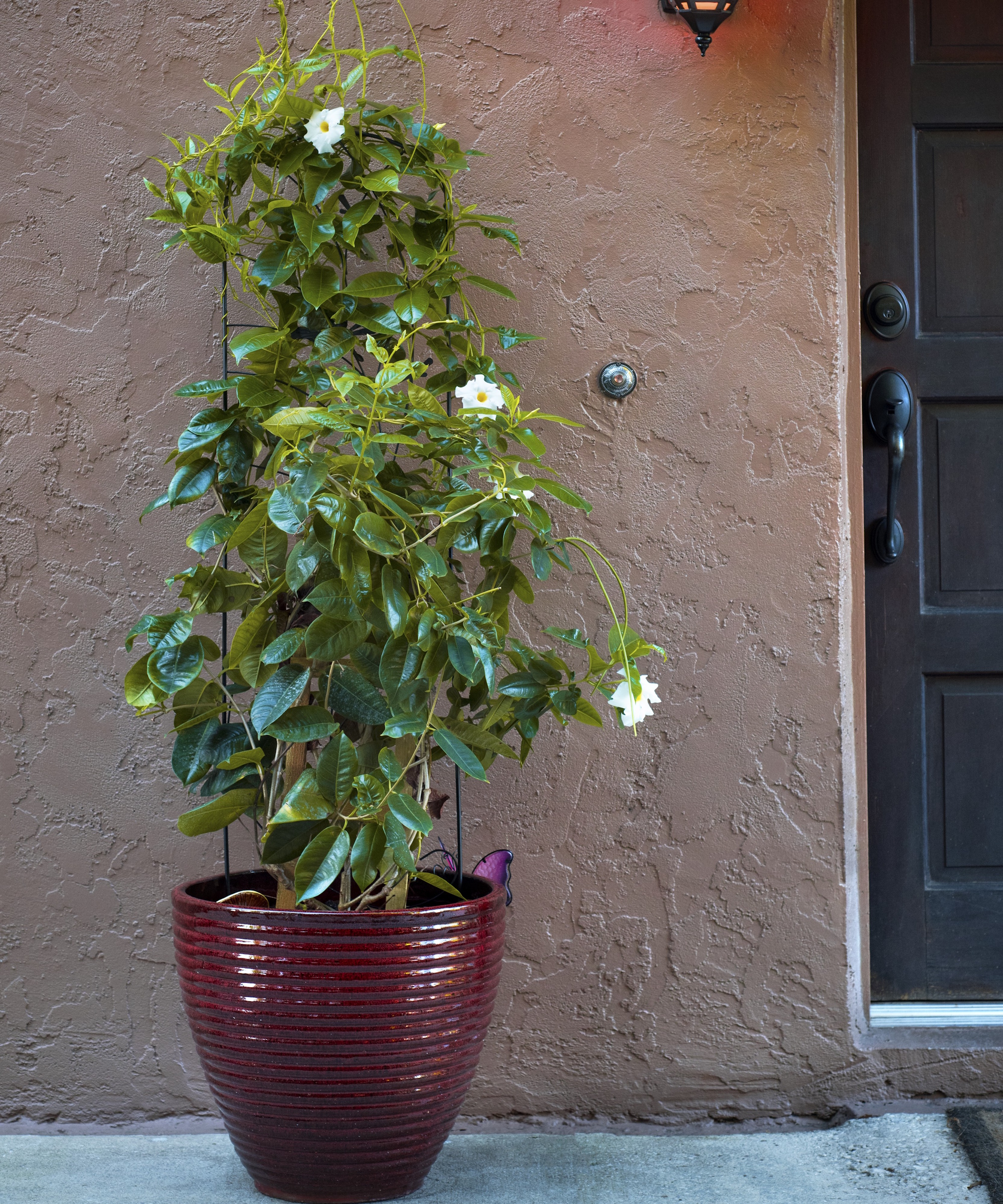
If you grow mandevilla in a pot, it can be simple to move it into a warm and protected space for winter and treat it as an indoor plant to enjoy. However, even if your plant is in the ground, it can be lifted to bring indoors. The mandevilla won't flower, but you can still enjoy the glossy leaves.
Design expertise in your inbox – from inspiring decorating ideas and beautiful celebrity homes to practical gardening advice and shopping round-ups.
To overwinter mandevilla as an indoor plant, follow the steps below:
- Keep an eye on the local weather forecasts to bring mandevilla plants indoors when temperatures look set to drop below 50°F overnight, and certainly ahead of any freezing temperatures.
- Trim the mandevilla to a compact, manageable size to fit indoors. The vines can be trimmed back by up to half with a pair of clean, sharp pruning shears.
- If the plant is in a pot, it can be as simple as moving the container. If the plant is in the ground, dig it up and pot it into a container filled with a well-draining potting soil for container gardening (like this Miracle-Gro potting mix at Amazon).
- Inspect the plant for any pests, including aphids, spider mites, and mealybugs. These small insects can be dislodged with a hose or a spray with insecticidal soap (such as this Ready-to-Use Insecticidal Soap at Amazon).
- Place the container in a sunny spot with lots of bright, indirect sunlight. A mandevilla requires a temperature of around 65-70°F throughout the winter and should be kept away from heat fluctuations caused by radiators, heating vents, or drafts.
- Water the plant weekly to keep the soil moist and prevent it from drying out. Avoid over-watering plants (only water when the top two inches of soil are dry) and don't fertilize mandevilla during winter.
- Come late winter, start to prepare the plant for the new season. Give it another trim, repot the plant if it needs it, and begin fertilizing once a month with a balanced liquid feed (like this concentrated liquid plant food at Walmart). The mandevilla can go outdoors once the temperatures are consistently above 60°F, after a period of hardening off.
How to Overwinter Mandevilla As a Dormant Plant
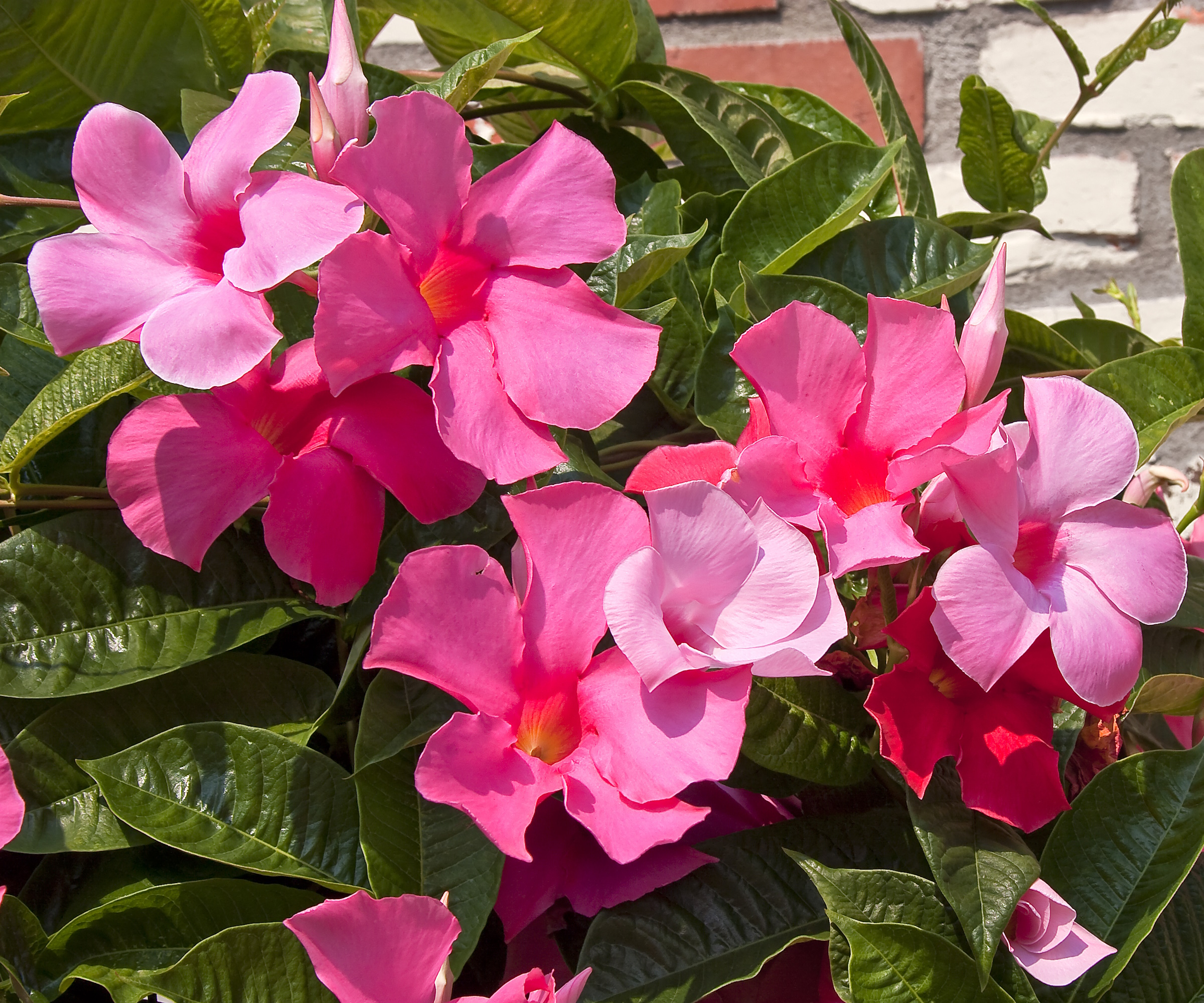
If you don't have the room to overwinter mandevilla as a houseplant, or cannot provide the right conditions for it to prosper, then the alternative is to put the plant into a dormant state to see it through the colder months. It can be done very simply in the following steps:
- Bring the plant indoors once the temperatures drop to below 50°F and before the first frost (and pot it up if necessary).
- Cut the plant back to 12 inches above the soil with a pair of clean and sharp pruning shears.
- Place the container in a cool and dark location where temperatures are around 50°F, such as a basement or a frost-free garage.
- Water the plant sparingly every few weeks – you only want to prevent the soil from drying out completely.
- Once the plant starts breaking dormancy in the spring, move the plant to a warm, bright position and begin to water and feed the plant regularly.
- Move the mandevilla back outside, after hardening off, once the temperatures are consistently above 60°F.
FAQs
What is the Lowest Temperature a Mandevilla Can Tolerate?
A mandevilla can tolerate temperatures as low as 50°F without showing any signs of damage. At temperatures below 50°F, the plants will struggle and start to drop leaves. At temperatures lower than 45°F, a mandevilla can be at risk of death. It is advisable to bring the plant indoors once night-time temperatures consistently drop close to 50°F.
Can Mandevilla Survive Winter in the Garage?
You can overwinter mandevilla in a garage as a dormant plant, providing the temperature stays above freezing. A window of 50-60°F is ideal, as the plant may break dormancy if temperatures rise above this.
If you are worried about losing mandevilla plants during winter, you can take plant cuttings as a backup. This can be done by taking softwood cuttings in early summer.
Take 4-6-inch cuttings of new growth and remove all leaves from the top half. Dip the bottom in rooting hormone (you can get rooting hormone powder at Walmart) and then place it into a small pot filled with potting mix. Place the cuttings in a bright location and keep them moist. They should root in around a month, when they can be potted up and grown indoors, ready to plant outside the following spring.
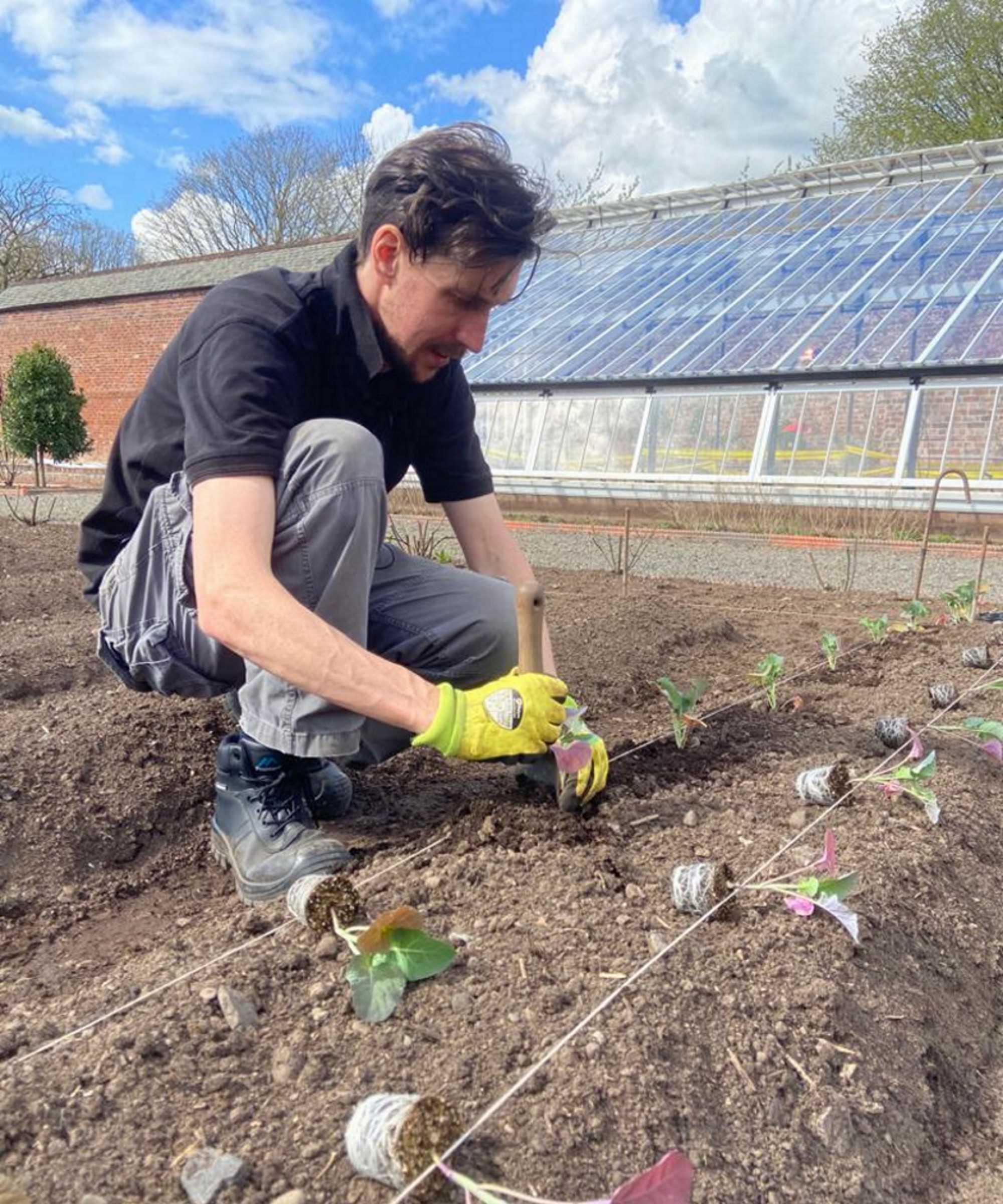
Drew has worked as a writer since 2008 and was also a professional gardener for many years. As a trained horticulturist, he worked in prestigious historic gardens, including Hanbury Hall and the world-famous Hidcote Manor Garden. He also spent time as a specialist kitchen gardener at Soho Farmhouse and Netherby Hall, where he grew vegetables, fruit, herbs, and cut flowers for restaurants. Drew has written for numerous print and online publications and is an allotment holder and garden blogger. He is shortlisted for the Digital Gardening Writer of the Year at the 2025 Garden Media Guild Awards.
You must confirm your public display name before commenting
Please logout and then login again, you will then be prompted to enter your display name.